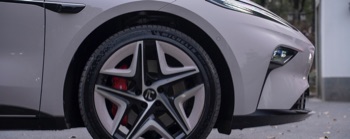It was a really interesting test driving event that caused me such great excitement, which I never experienced during all these years of being a car enthusiast. The star of the show was my FlyBan F7, which I had pre-ordered last month. Today, as one of the first owners to enjoy a test drive experience, I was permitted to enter the venue in my 3 Series after informing the organizers of my situation. My main goal was to thoroughly enjoy the flagship product of China’s new energy vehicles and to see how it measures up to other well-known German sports car models, such as the 3 Series. After going through a series of complicated explanations about the activities, I finally had the opportunity to compare and contrast the F7 and 3 Series in the same room.
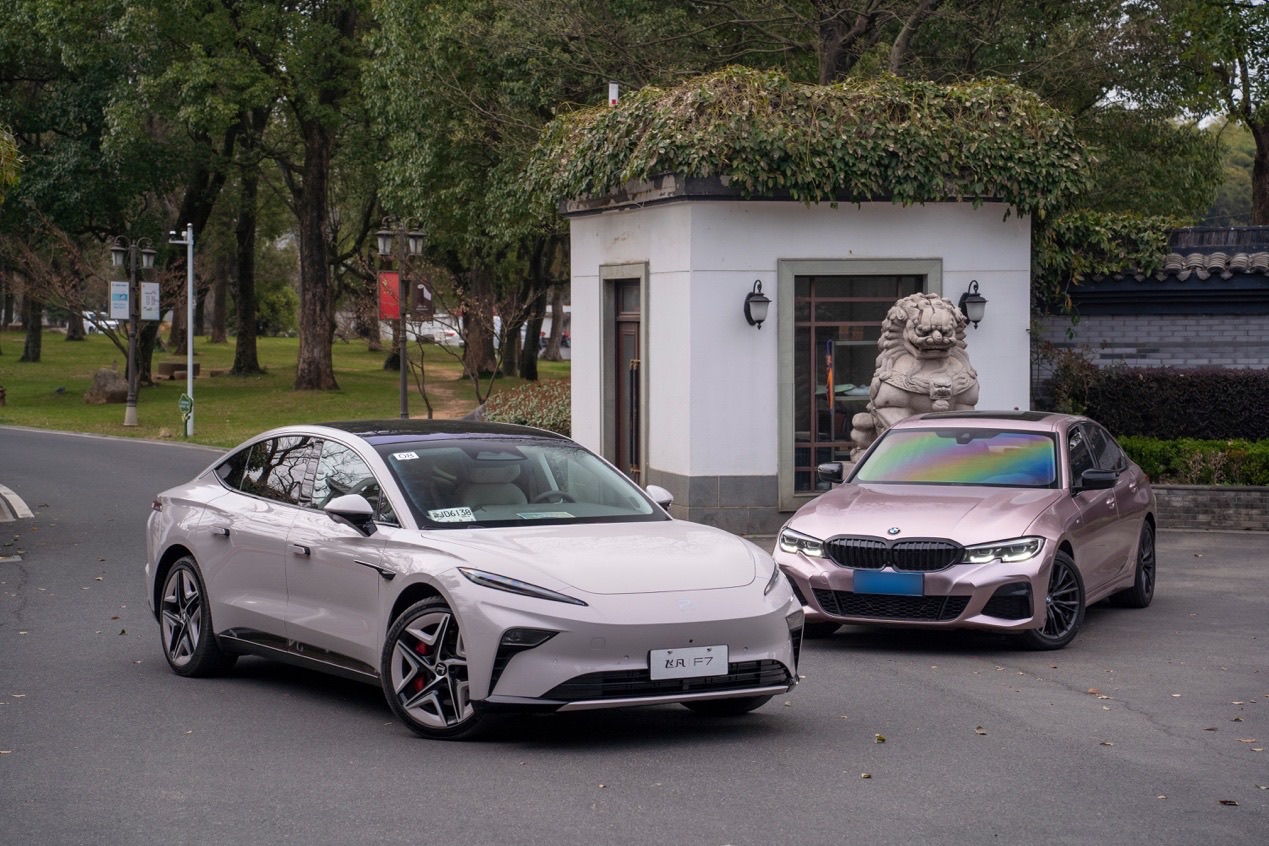
The clear differences in style between the FlyBan F7 and BMW 3 Series appeal to my personal aesthetic senses. The F7 stands out by offering a singular advantage in terms of its length, which is especially noticeable in the mid to large-sized car segment. In comparison, the 3 Series emphasizes its “agility” by incorporating a sleek and low front-end design, along with the classic double kidney grille that symbolizes BMW’s tenacious spirit. The short and compact car body, along with the blackened lower lip exposing dual exhausts, constitute a distinct design language evident in the 3 Series.
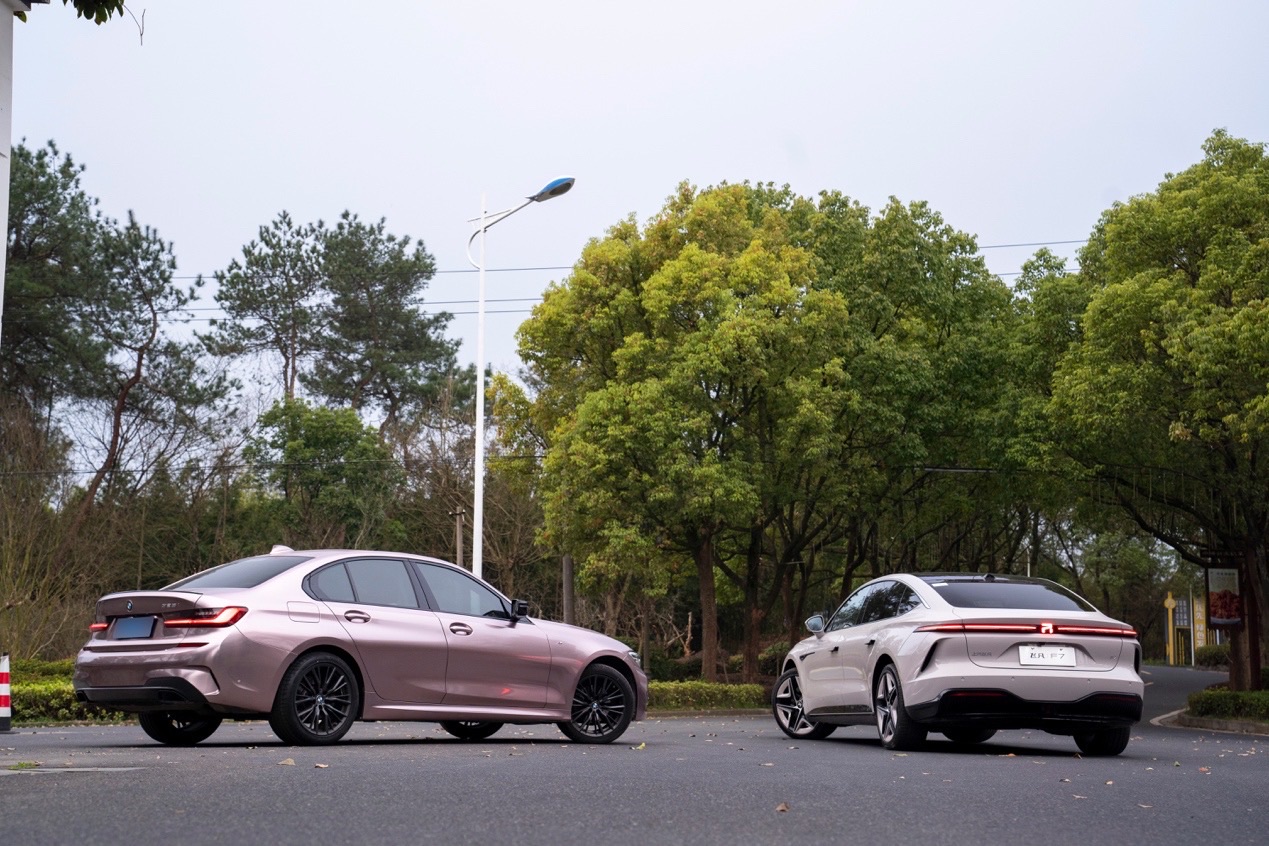
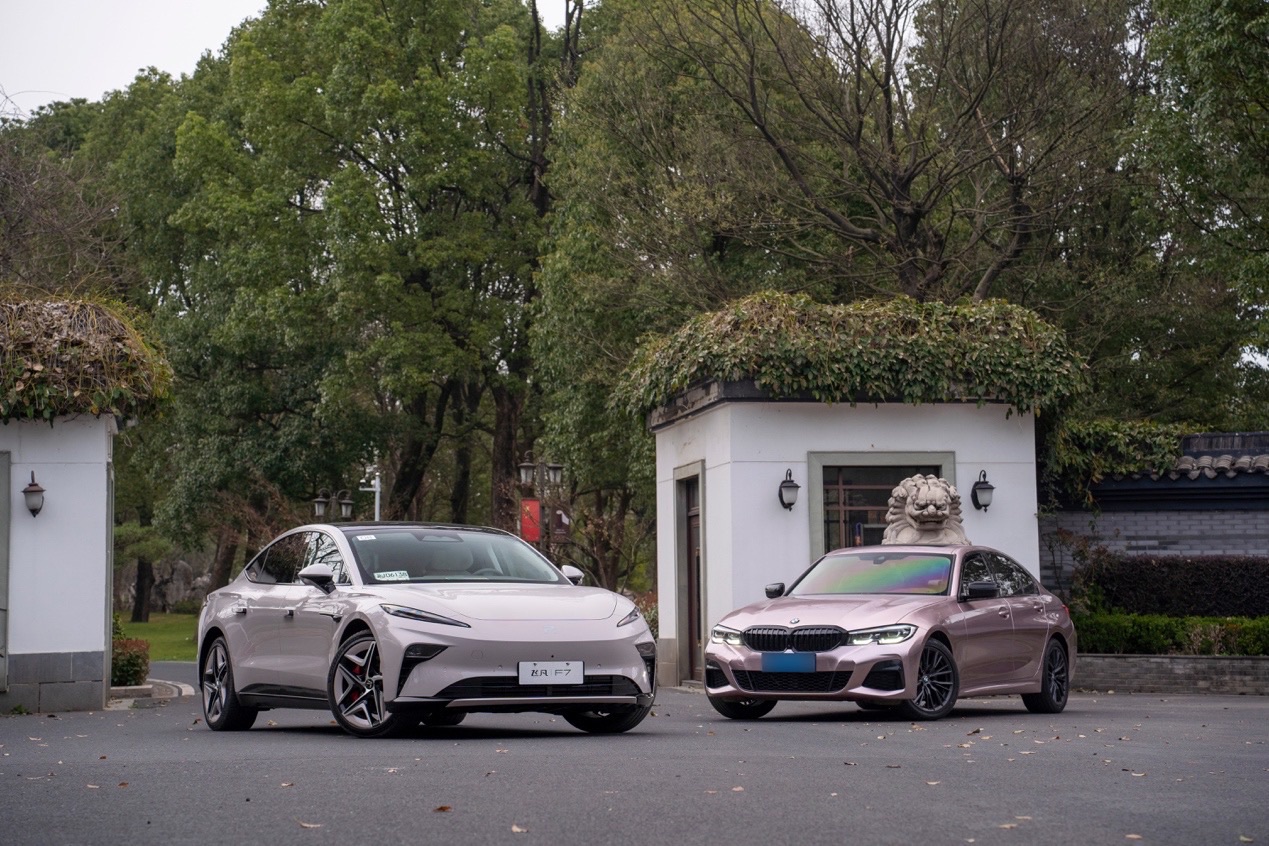
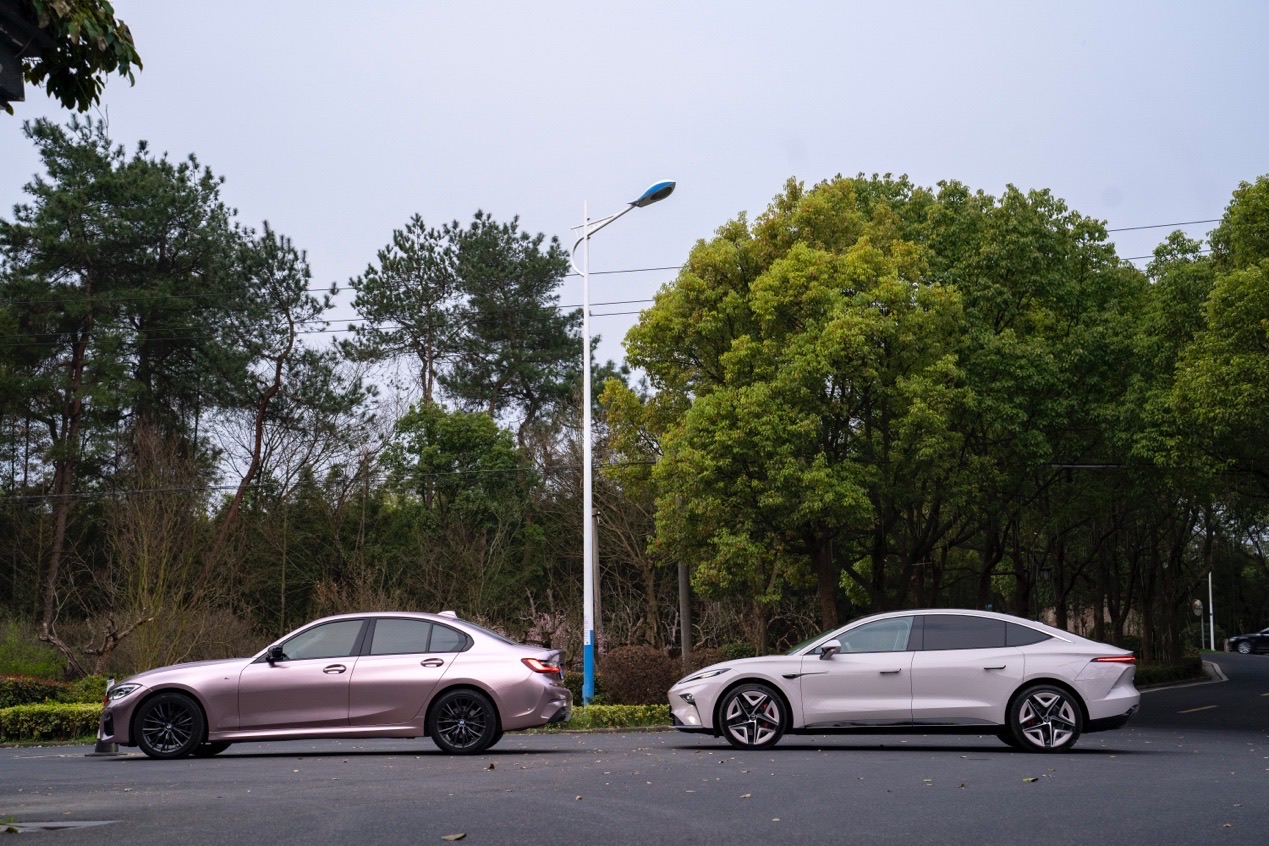
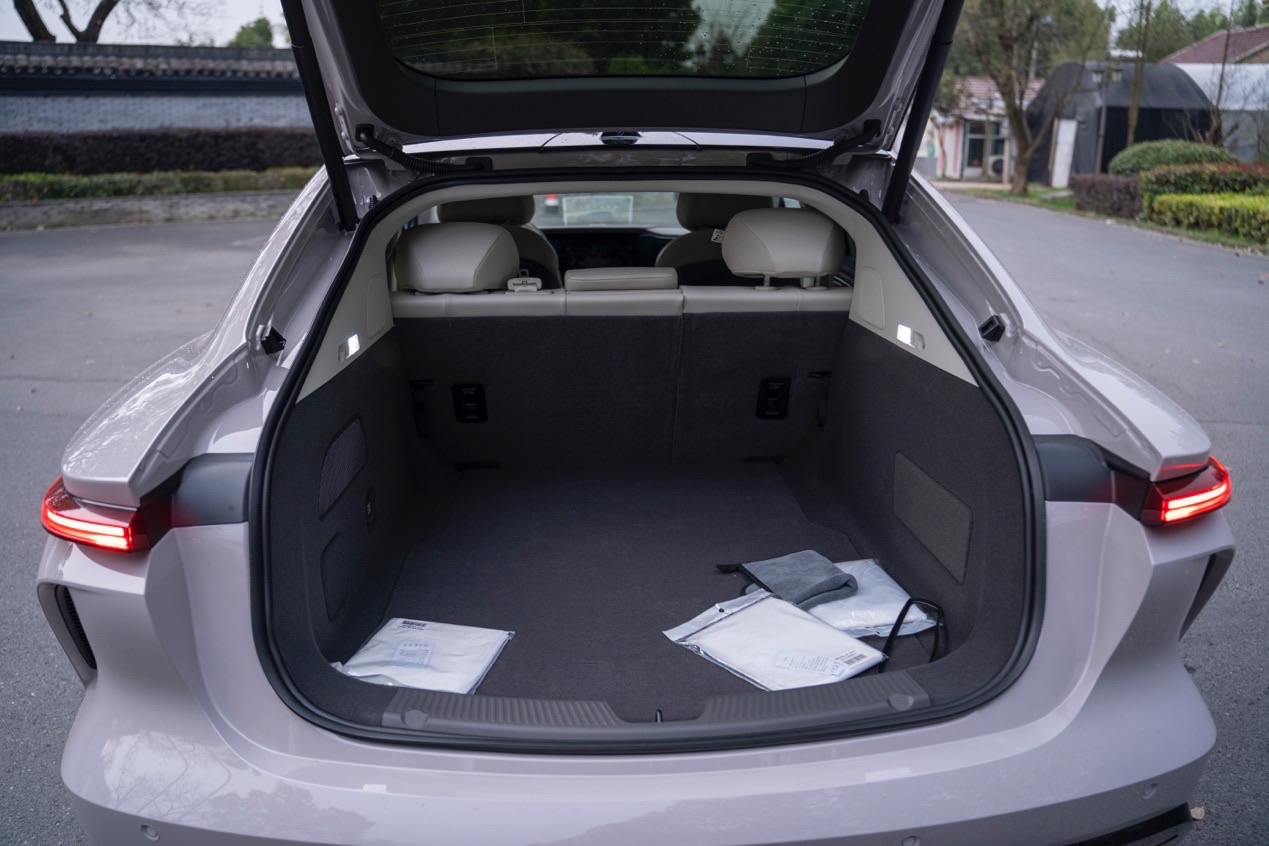
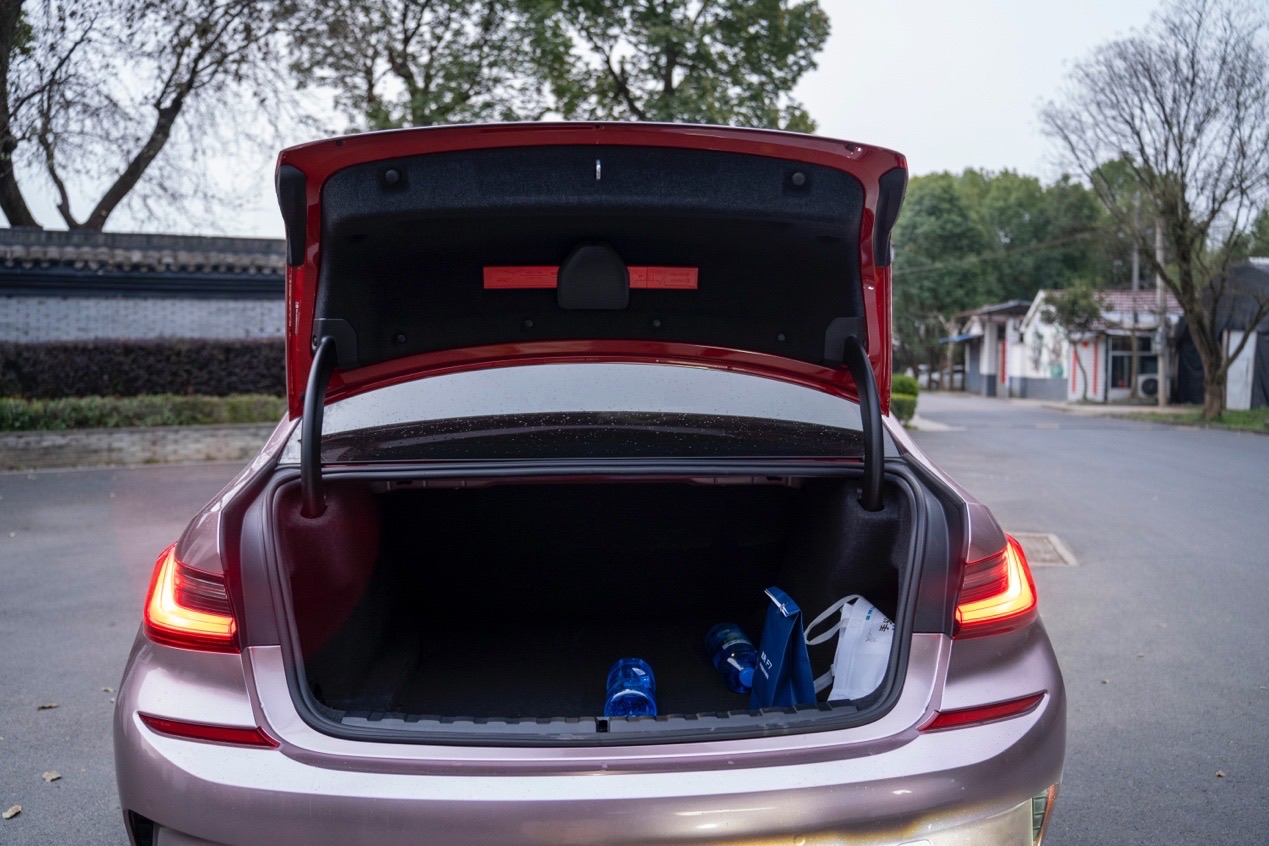
In contrast, the FlyBan F7 exudes a smoother and more elongated feel to it. Especially upon seeing the real car, the “kinetic” lines going from the front to the back of the car body are instantly unforgettable. The F7 has a more lively aspect, mainly due to proportioning from its front to rear body ratio, movement, and design. As it is an electric vehicle, it has naturally forgone the traditional front air grille. Instead, a fierce front arc extends from the left to right bumpers, while the Jet Flow aerodynamic package applies equally to both sides, making the F7’s 0.206cd air drag coefficient the best in series production. Of course, the F7’s positioning is more like a mid to large-sized GT fastback, with a stylized hatchback tailgate. In my opinion, the epitome of the F7’s streamlined design looks like my future car. After all, sports cars such as the BMW 8 Series and the Mercedes-Benz AMG GT50 have been my lifelong pursuit in terms of coupé-car aesthetics.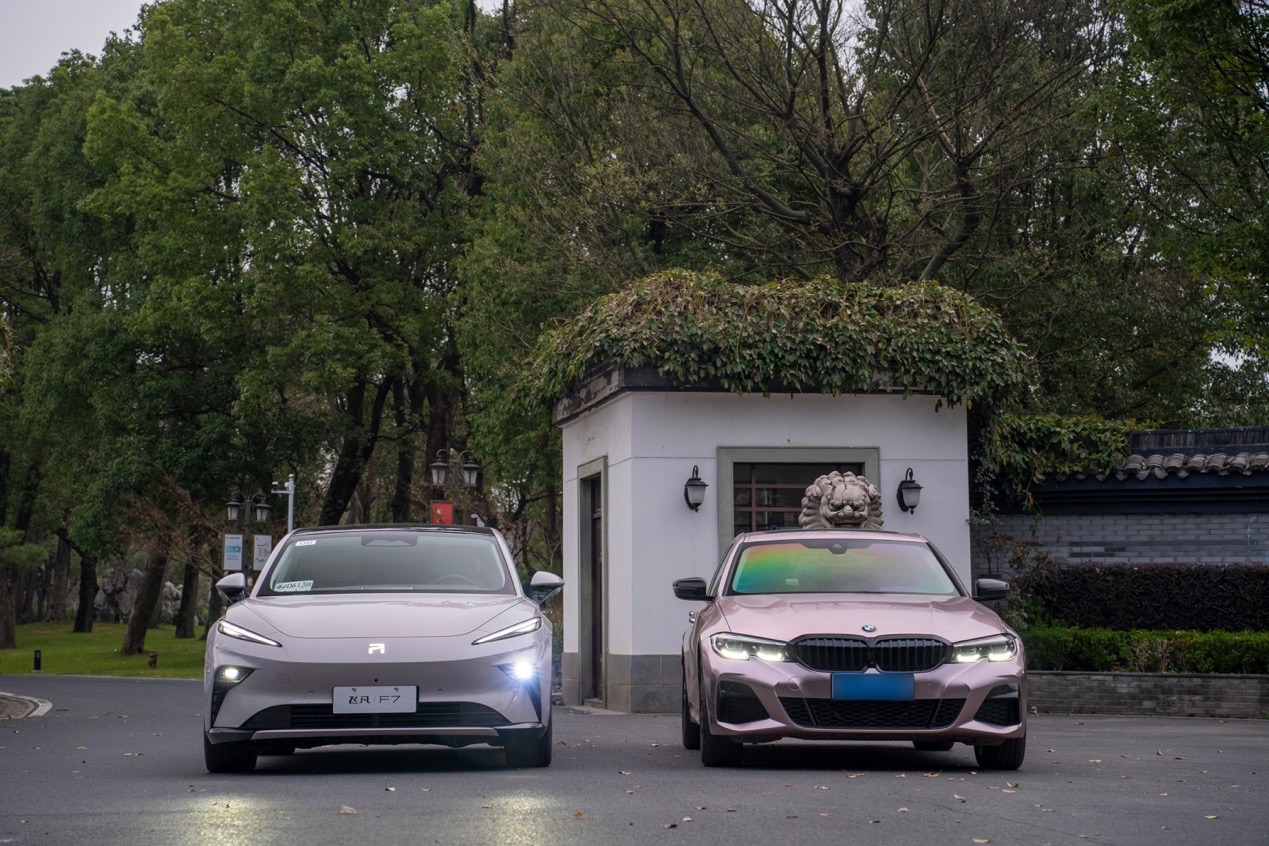
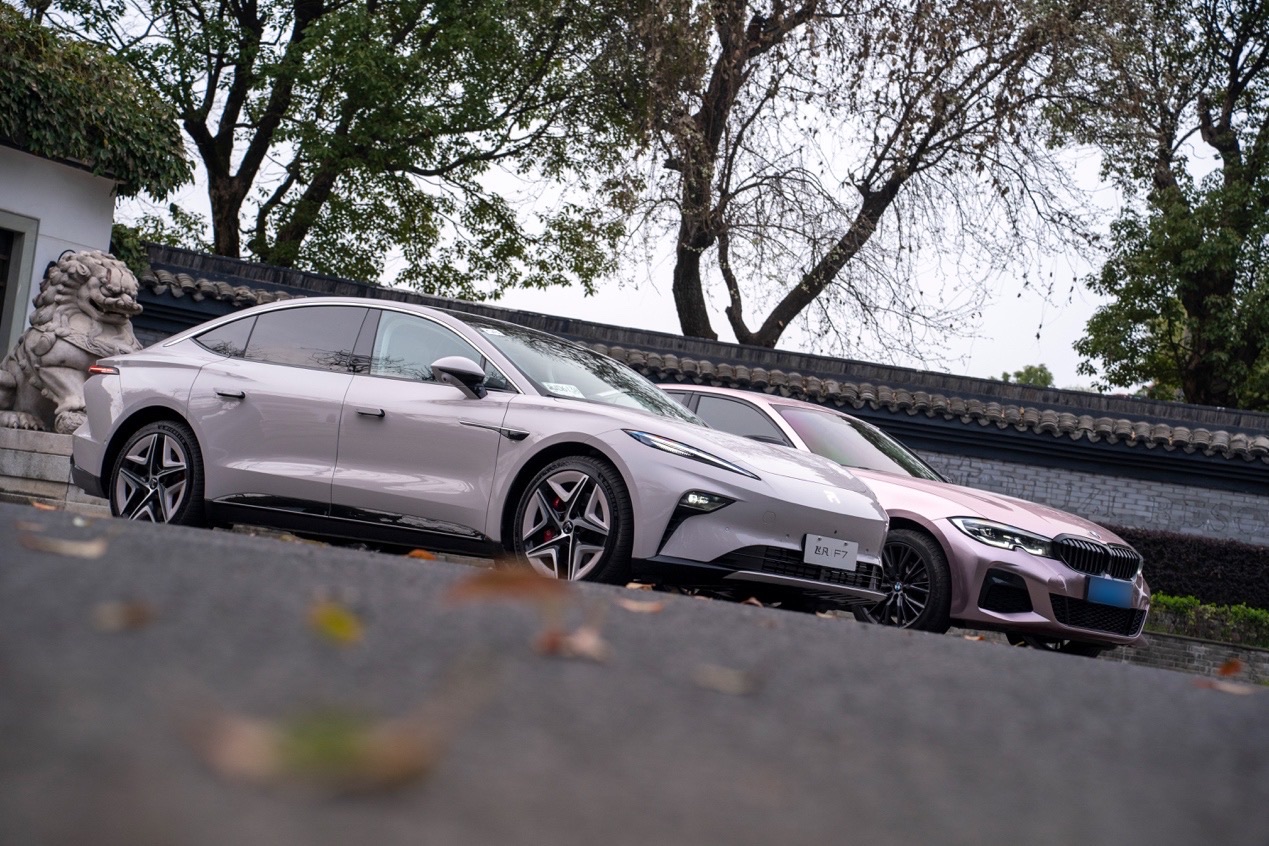

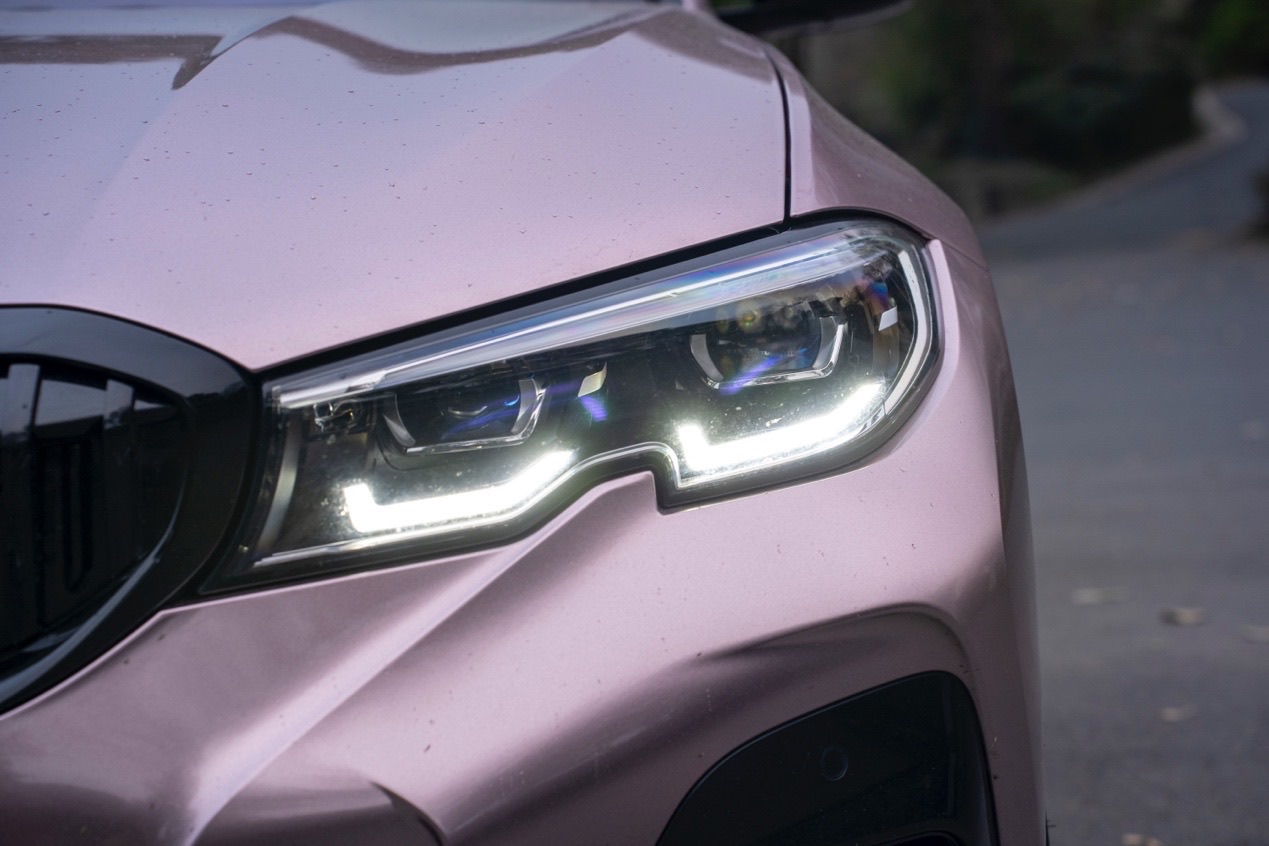
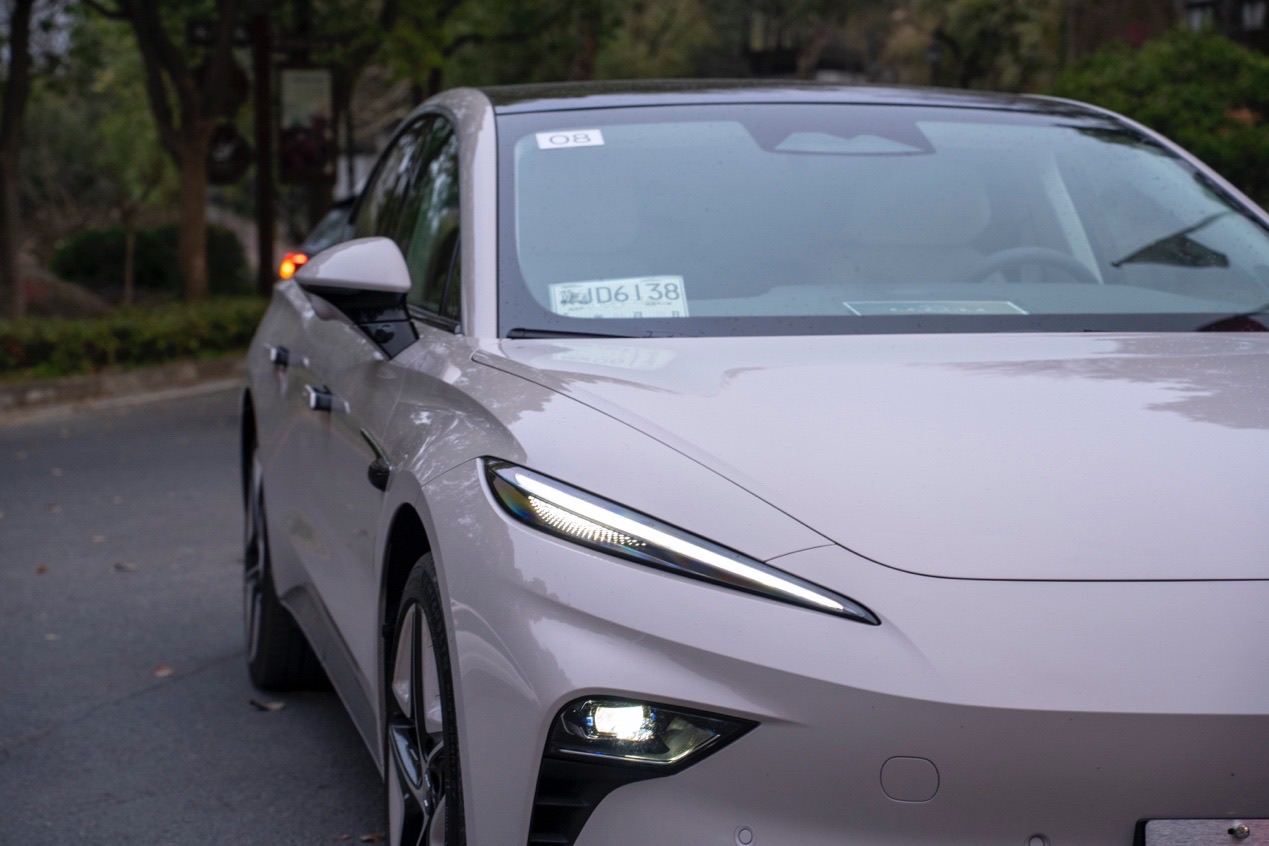
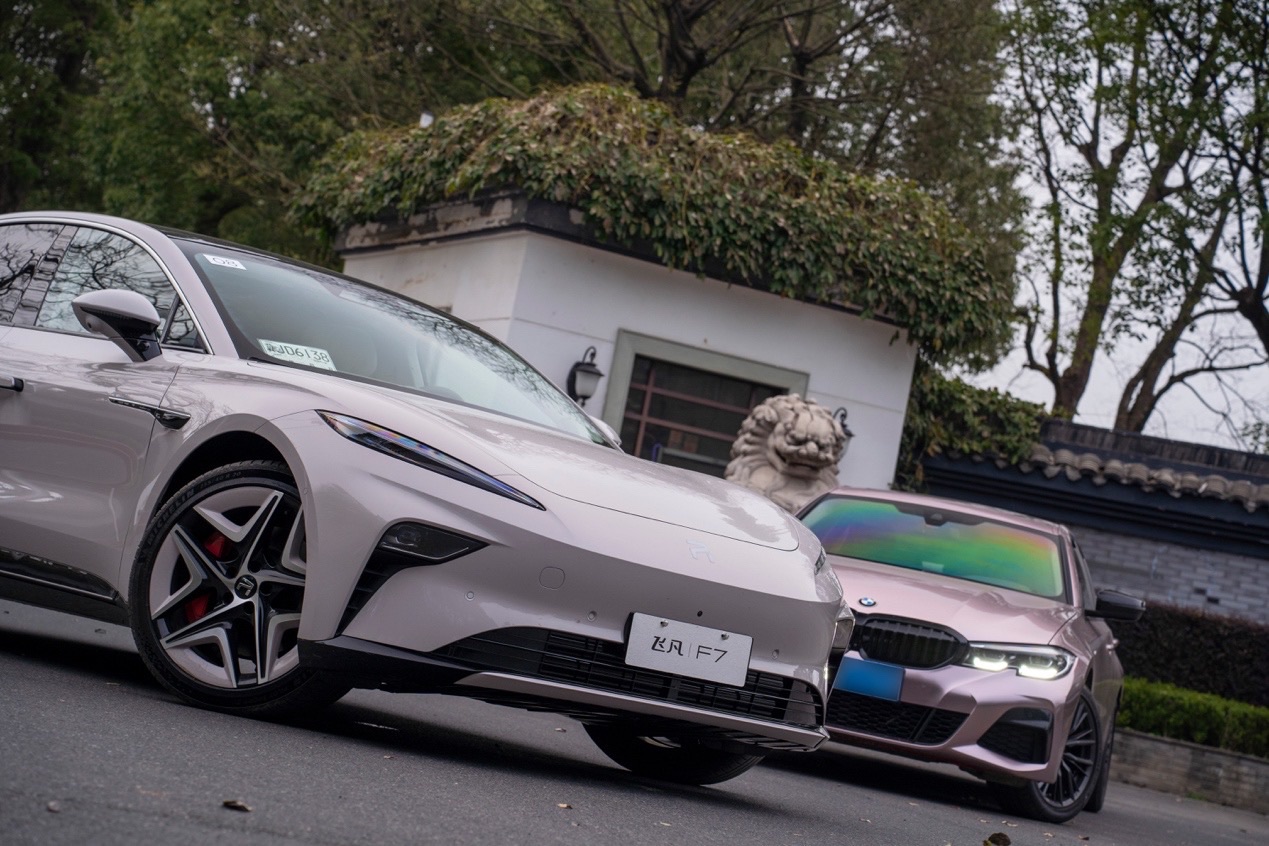
When it comes to personal preference of appearance, it is subjective. However, in terms of the difference in oil-electric design, these two cars have completely different directions.
【Opening the door reveals distinctive direction orientations】
While their exterior designs focus more on differences in the “oil-electric” aspect, their interiors have made significant changes in terms of directional orientation.

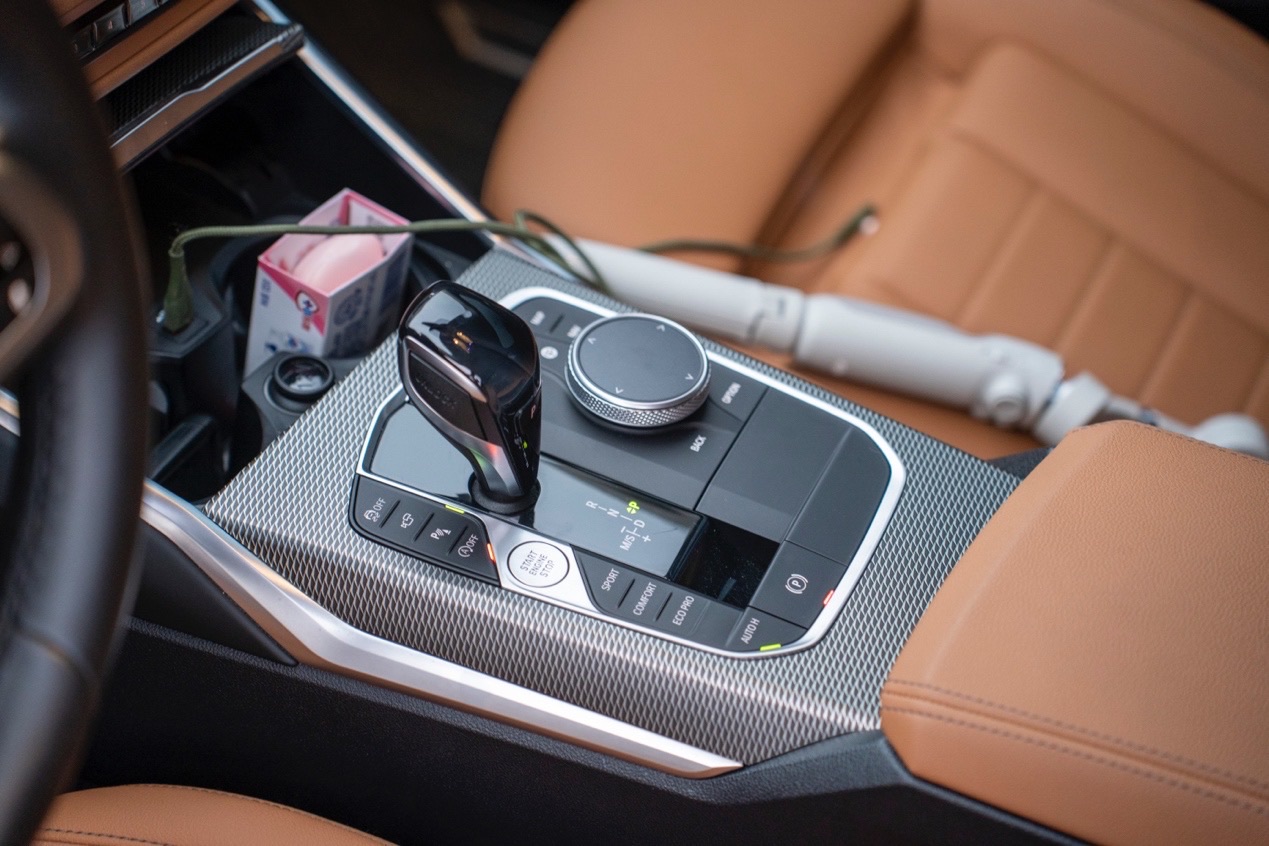
What the 3 Series gives me is the ultimate mechanical sensation. Despite inevitably being equipped with dual LCD screens, the brushed aluminum panel and the well-crafted soul shifter are the best interpretation of the 3 Series being known as the “driver’s car”. The grip of the steering wheel is sturdy, and the entire central control layout is tilted towards the driver. Therefore, for those who consider driving as a source of joy, the interior of the 3 Series will definitely be eye-catching. Therefore, at the time, I was also completely captivated by the 3 Series.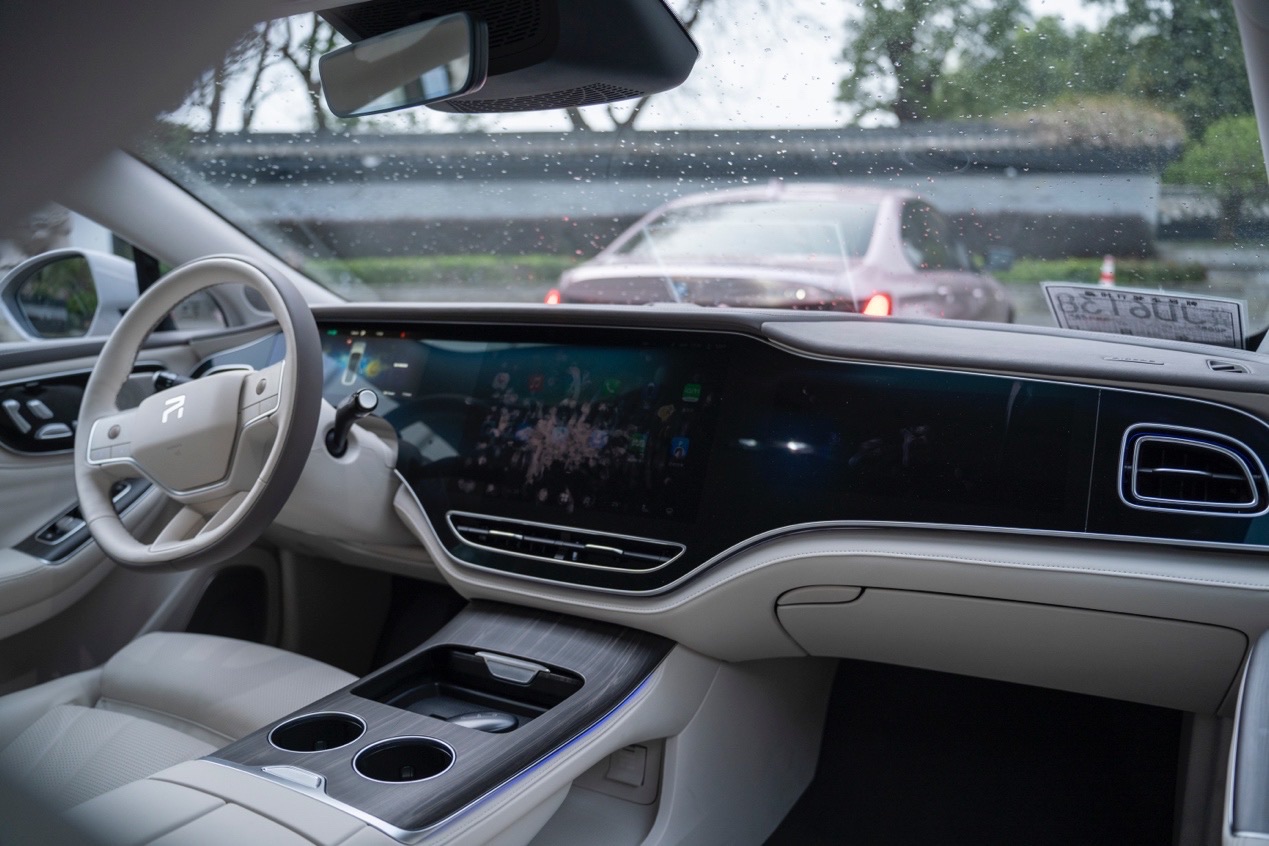
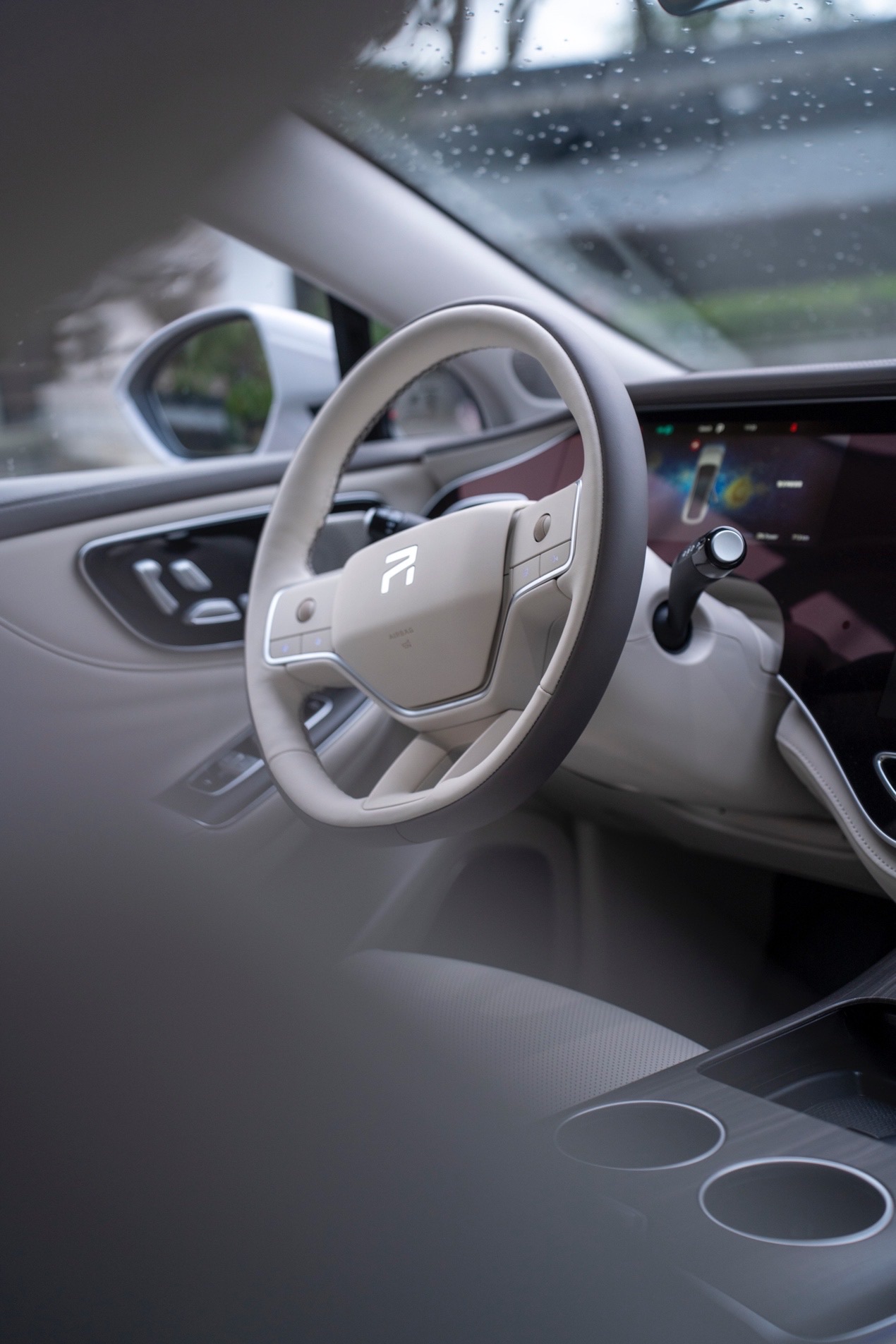
However, F7 looks like the appearance of a new energy luxury electric vehicle from the outside to the inside. Starting from me pulling the hidden door handle, the double-sided bonded frameless glass door reveals the signal of “fully equipped”. So it is not surprising to see the full 43-inch Dalian screen inside the car. Although I advocate mechanical aesthetics, I never oppose the degree of screen occupation in the car interior, because whether it is mechanical control or electronic control, its principle is to better serve human use. I have seen many cars with mechanical buttons that operate against humanity, and I have also seen cars with a bunch of screens but poor human-machine interaction. The BMW 3 Series and F7 are in opposition to these two situations, the 3 Series combines physical buttons and car machine control, while the F7 combines voice experience and electronic operation. In the process of testing continuous dialogue, the entire voice recognition logic and stability of F7 are very good, and another best advantage of the electric intelligent platform is the interconnection and control of the mobile APP. It is still very pleasant to turn on the air conditioning ten minutes before getting on the car.
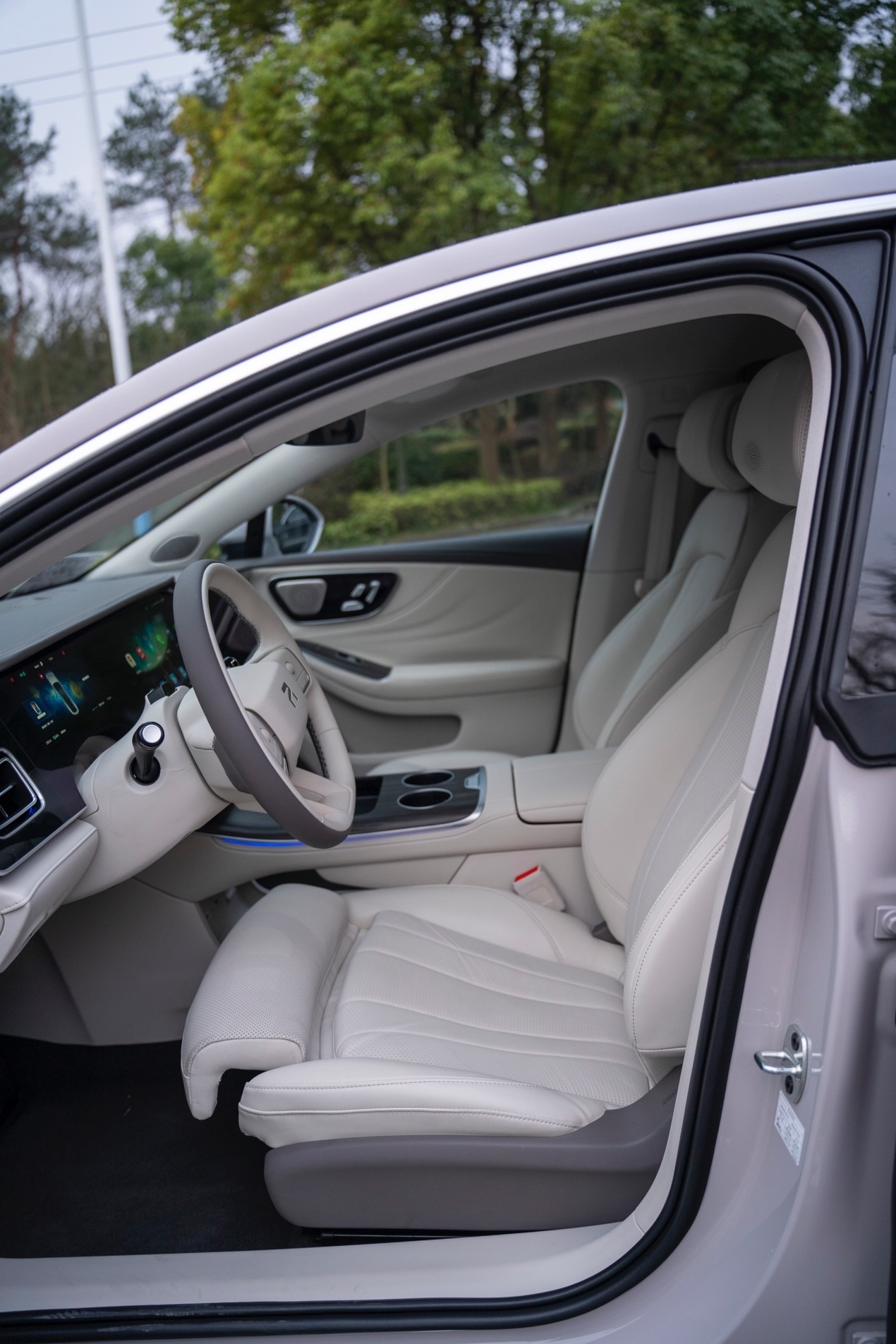
Not to mention the advantages of F7 in the intelligentization of car machines, navigation planning, car entertainment, RisingAuto RISING PILOT intelligent driving system, and the “two-way dual-zone independent audio and video” composed of the co-pilot screen and the rear 8-inch screen. In the same price range, the BMW 3 Series indeed has no bright spots in terms of intelligence…
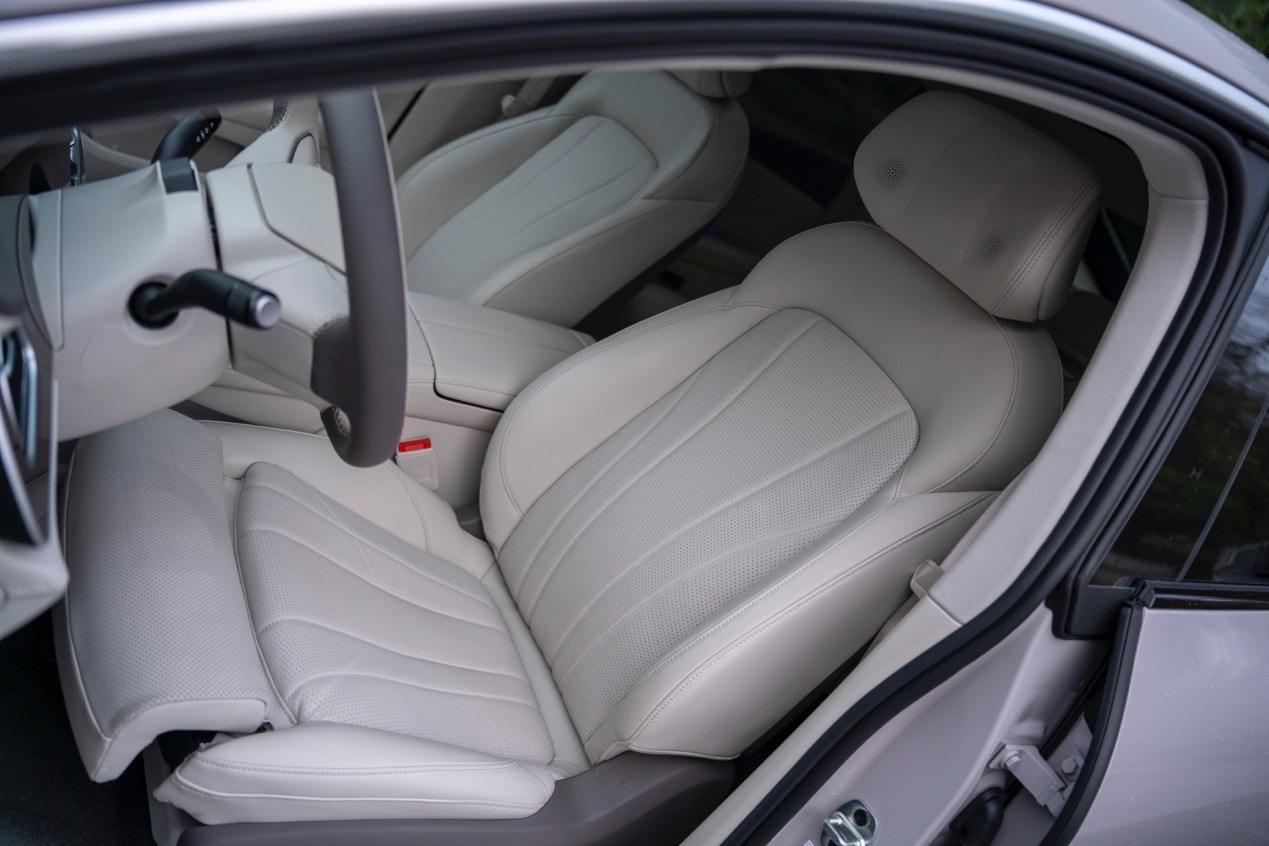
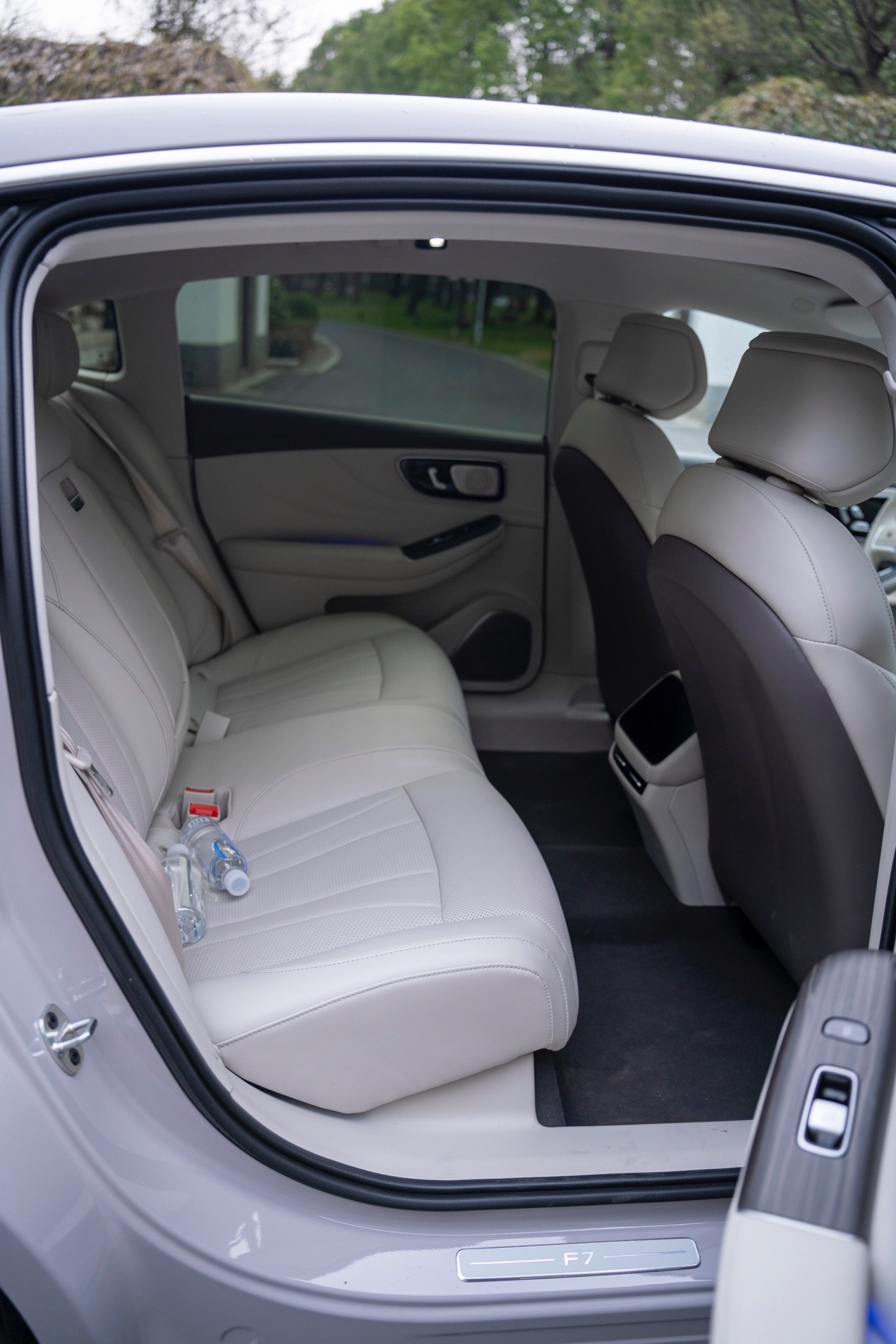 “`
“`
Another discrepancy caused in my heart is the feeling of riding. I think the 3 Series is fun to drive but not comfortable to ride, at least not in my opinion. Flyover named the F7’s seats “Bach seats”, which actually means a thicker filling, more conforming backrest, and more supportive cushion. Numbers cannot give the most profound impression. You only need to sit in the F7’s seat once to experience what I felt. It recreates a completely different sitting experience compared to other cars! Compared to the domestic flagship NIO ET7 that I experienced, F7 has more than just functional features like ventilation, heating and massage, it also has ergonomic design, which is the most impressive feature of the F7’s seats in my opinion.
“Talking about dynamics, the gap in my heart gradually widens”
Having talked about the static features of the cars, in summary, their exteriors are both unique, but I prefer the F7’s interior more. After weighing the pros and cons, the key point is that the F7’s ride experience is really great. Even if this article ended here, I would still be willing to pay for F7’s car cabin. Of course, static design remains an ephemeral feeling like a flower in a mirror, so for people who care about driving, a dynamic driving experience can fully showcase a car in a 360-degree angle.

——Acceleration & Brakes
The first thing to talk about in terms of dynamics is the acceleration performance. Flyover offered us a large dynamic test drive plaza to experience the F7’s performance. First of all, I will not use a gasoline car’s acceleration to compare with an electric car’s acceleration. One is the mechanical sense of internal combustions and gearbox matching, and the other is the adrenal surge caused by the instant torque of the motor. I got the four-wheel-drive version of the F7, and I no longer care about the 3.7s 0-100km/h test result. Here is my experience:
For one thing, the F7’s acceleration has an infinitely variable mode, which means that any driver can find the acceleration mode most suitable for their right foot’s feel. However, what I prefer is the “adaptive mode.” This is one of Flyover’s great features where the pedal has a linear start-up feel. The acceleration is similar to the silky foot feel of a naturally aspirated engine during initial start-up. You can clearly feel that the depth of the accelerator pedal is greater than the speed feeling. This is very suitable for urban commuting and easy-going driving. If you want to play fiercely, all you need to do is step on the accelerator pedal as much as possible. The 400kW front and rear motors will transform 700 Nm of torque into a thrust feeling, which will be released in an instant. At this point, you must grip the steering wheel tightly to stabilize the driving’s back torque for that small fraction of a second. The rest does not need much explanation. This is the best pleasure brought by high-performance electric cars. This pleasure remains unique in Flyover’s F7, a mid- to large-sized luxury sedan!
There is one more thing that needs to be mentioned, the throttle lag. I’ve experienced this kind of no-foot-response on a lot of electric cars except for Tesla. The F7 still has a delay in throttle response, but it is so well hidden that it is barely noticeable if you don’t pay attention.
“`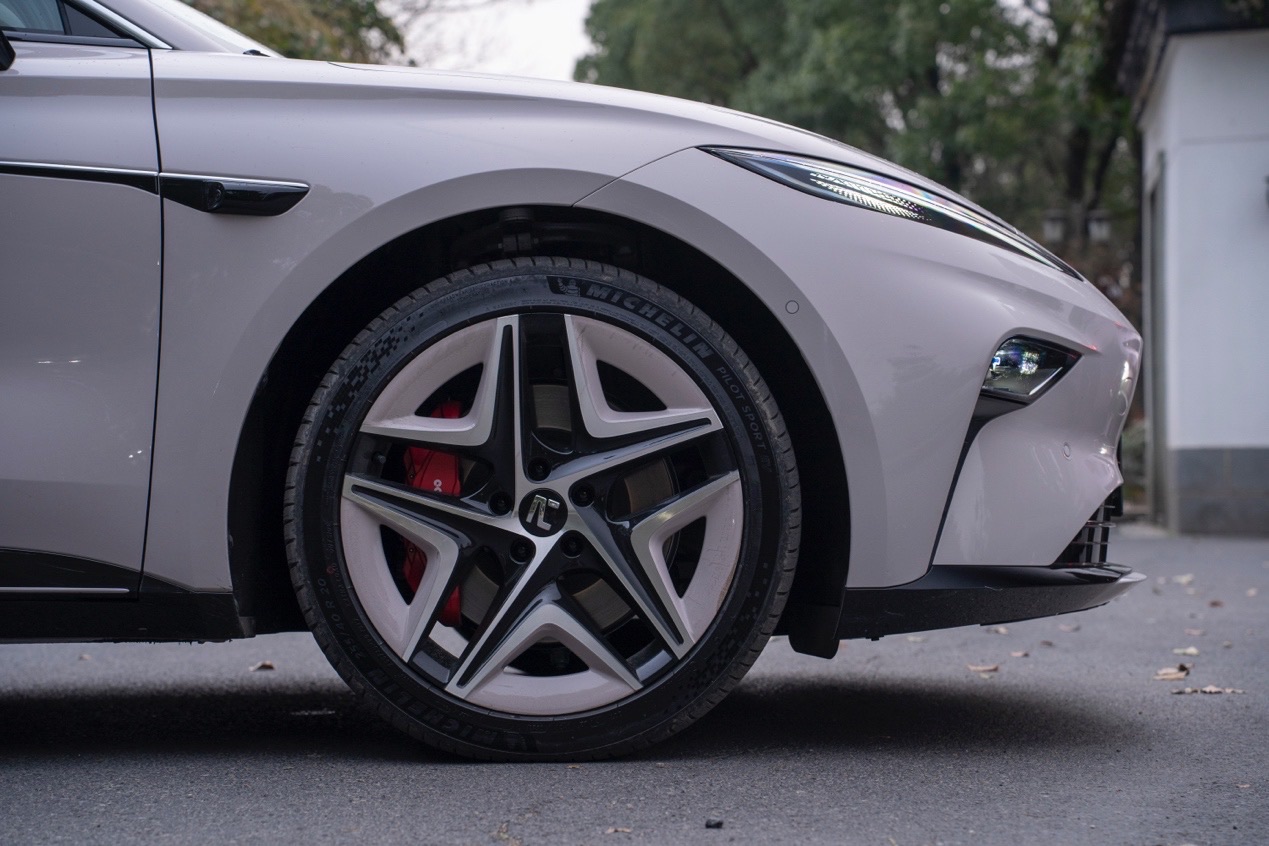
On the topic of braking, there are two things to mention about F7: one is that it uses Brembo’s front four-piston brake calipers, and the other is that the braking pedal feel driven by the master cylinder is very good. In terms of front-end brake force, it is linear enough compared to the case where no matter at what speed the first and last stages of braking are applied, BMW 3 series will nod its head. F7 clearly requires less driving experience for car control, which is undoubtedly a good thing.
——Suspension and Chassis
At the event, there was a section for visiting F7’s chassis. The front double-wishbone suspension and the rear five-link suspension are the formulas that are commonly used in this price range. F7 uses 88% of aluminum alloy in the lower part of the spring and also considers the lining, etc. However, no matter what kind of ingredients are included, it is still more of a test of the tuning strength of the car company’s chassis department.
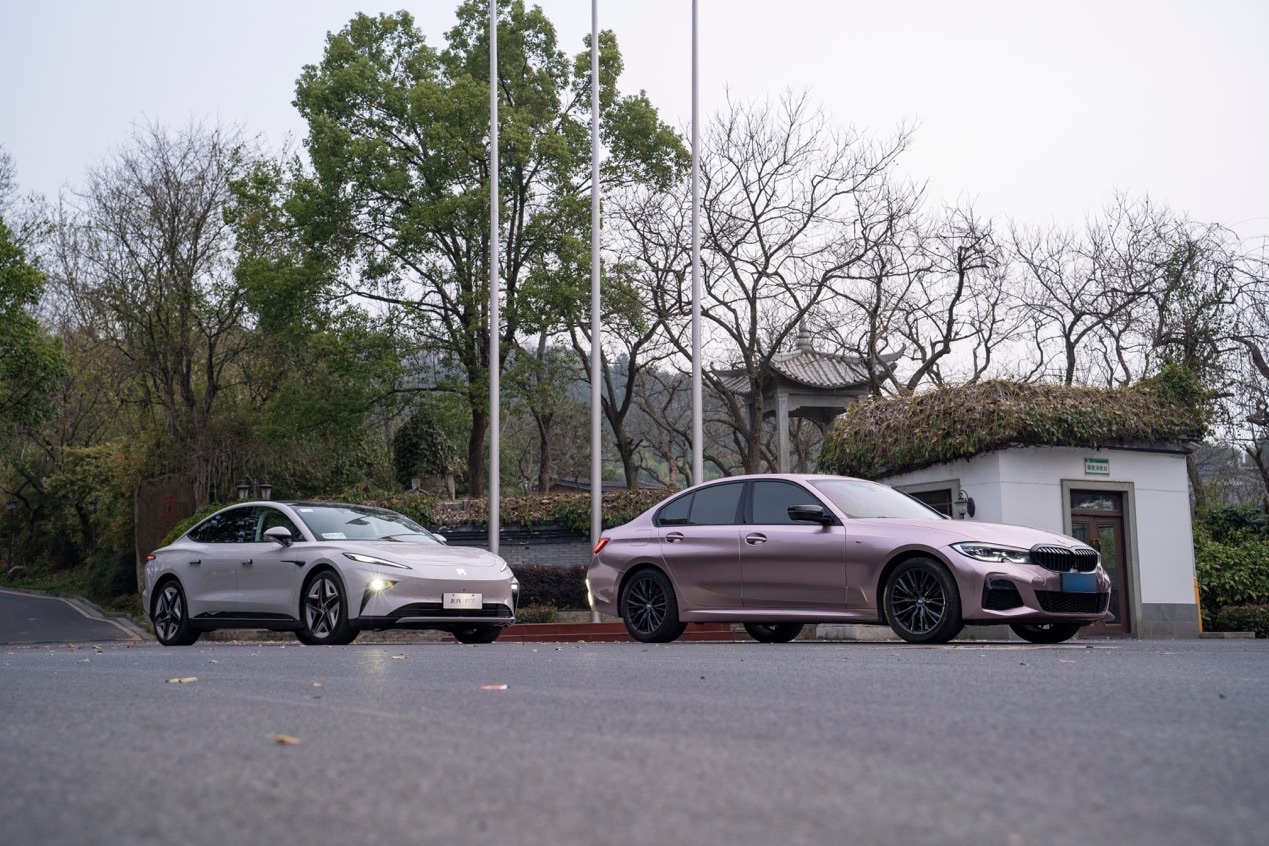
During the free road test, I ran a distance of nearly 41km, including national highways, provincial highways, and urban roads, very carefully. When driving on these standard asphalt/cement surfaces, F7’s chassis toughness is really beyond my expectations. It is obvious that the overall rigidity is sufficient. For example, when any tire runs over a small pit, the feeling transmitted to the steering wheel and the seat is clear. The sound of passing over the speed bump is also crisp and neat. The filtering of the ground is not complete, but the slight insulation road feel is actually very good for the driver. It is not noisy, but the perception can be felt. However, there are also small defects. At the moment of landing on a steep slope, the rear axle will have a slight excessive up-and-down bounce. I guess it is related to the compression stroke adjustment of the rear suspension, after all, the rigidity is very adequate when passing over a pit. Perhaps the high-speed landing on the steep slope has exceeded the bearing range of the rear axle.

F7’s body is 5 meters long, the wheelbase is 3 meters, and there is also a heavy battery pack in the chassis. Therefore, the follow-up of the lateral change in lane is not as sensitive as that of the BMW 3 series. But, surprisingly, F7’s steering is very accurate. The front axle judges the direction efficiently, which is another surprise for me! If we compare the hard-to-drive cars to change direction, the rear of the car will follow 0.5s slowly. Then, when F7’s front axle changes direction, the rear of the car will follow up linearly within 0.5s. So strictly speaking, F7’s car-following ability is very high, and the rear of the car will follow the linearly with the front of the car at a certain time, which is a very powerful tuning level! The advantage is that while ensuring flexible driving, the children sitting in the back seat watching cartoons will not be thrown back and forth, but will quietly watch their parents show their driving skills…Translated English Markdown:
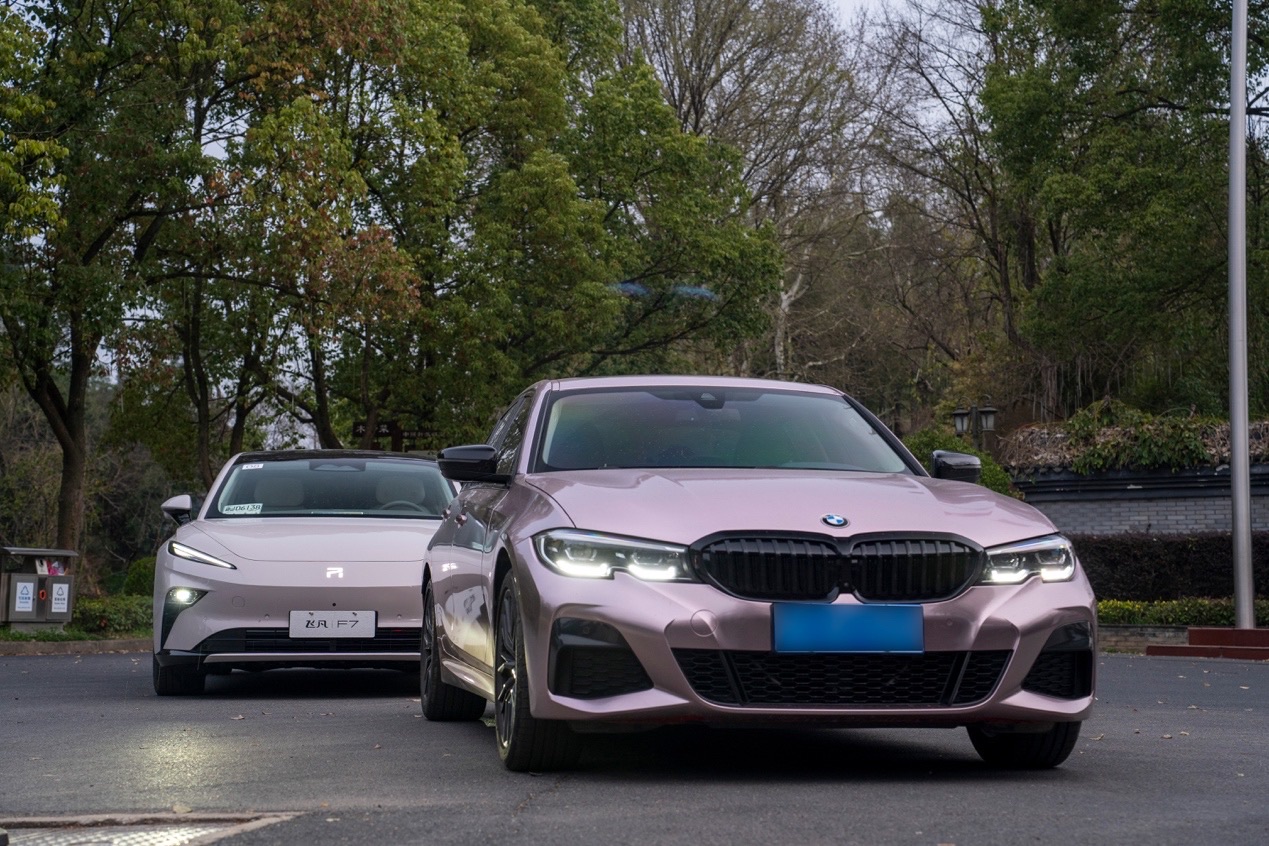
In summary, compared to the scene at Fei Po, the handling of the 3 series is more appropriate (mine is the 325i, standard axle), but the weight and size of these two cars are not in the same level. F7 is much better in terms of ride comfort, and there is no more difference between the two cars in other driving scenes. If comparing the overall driving control and comfort, I would be a bit disappointed with the 3 series, the once-driving king, how it has ended up like this… If I had to personally evaluate the F7’s chassis, I think it should be the best-tuned mechanical suspension chassis I have ever tried in this price range (even surpassing some high-end models).
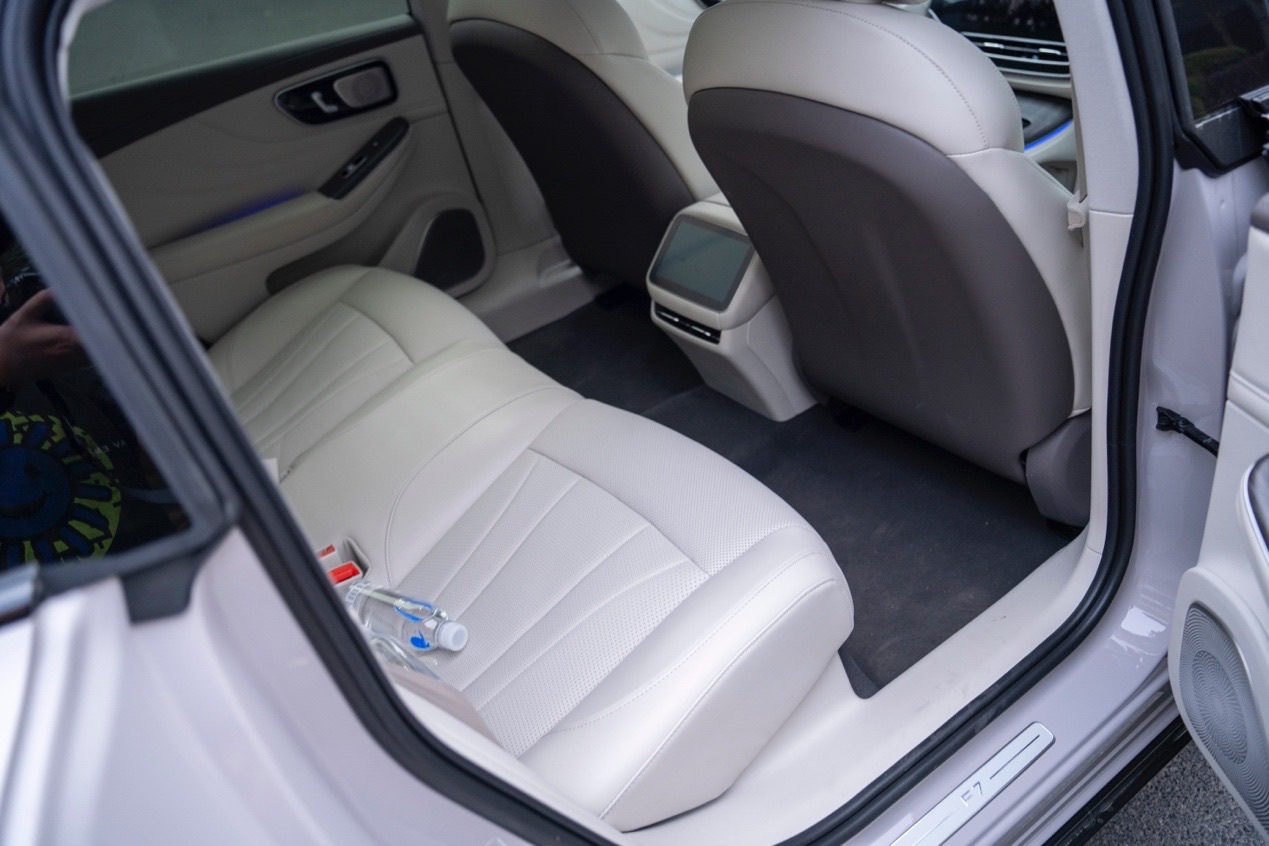
- Experience of the cockpit during driving
Quiet, not noisy at all, and only 58.4db of noise when cruising at 80km/h. The double-sided laminated glass is still perceptible, after all, this “Bach’s cabin” is the F7’s signature feature and noise control must be appropriate! As for the “non-branded” 3D sound that many people are concerned about, I think the sound field effect of Fei Fan is definitely the best in the same level, even compared with the Harman Kardon on 325 (which is a self-developed sound effect) and sounded more ‘surrounding’. The comprehensive experience of the Bach’s cabin by connecting the car entertainment system, seat, and 3D sound effect, the description cannot be accurately conveyed by words, you must experience it for yourself to fully comprehend. My evaluation is – it is definitely one of the selling points of F7!

[Finally, my thoughts]
Many times, people are easily carried away. After I test drove the F7 that day, I tried to tell myself: no, this is all your one-sided feeling about the F7. How could it be more suitable for you than the 3 series? So I waited and waited until the second day, the third day, and I found that what I thought was just “momentary enthusiasm,” had actuallyIn my memory, F7 has left an indelible mark. I must admit that it looks good, fun to drive, comfortable, and even though the 3 series can bring me brand satisfaction and mechanical operation pleasure, if these two cars are put in daily use scenarios, I would rather drive the F7 out. This view is enough to express my evaluation of the F7. I originally ordered the F7 because my wife likes its appearance and I wanted to buy it for her to drive. So before coming to test drive it, my expectations were not high. It would be enough as long as it could satisfy my daily driving feelings. But after the test drive, I was thinking about how to convince my wife to drive the 3 series…
This article is a translation by ChatGPT of a Chinese report from 42HOW. If you have any questions about it, please email bd@42how.com.
